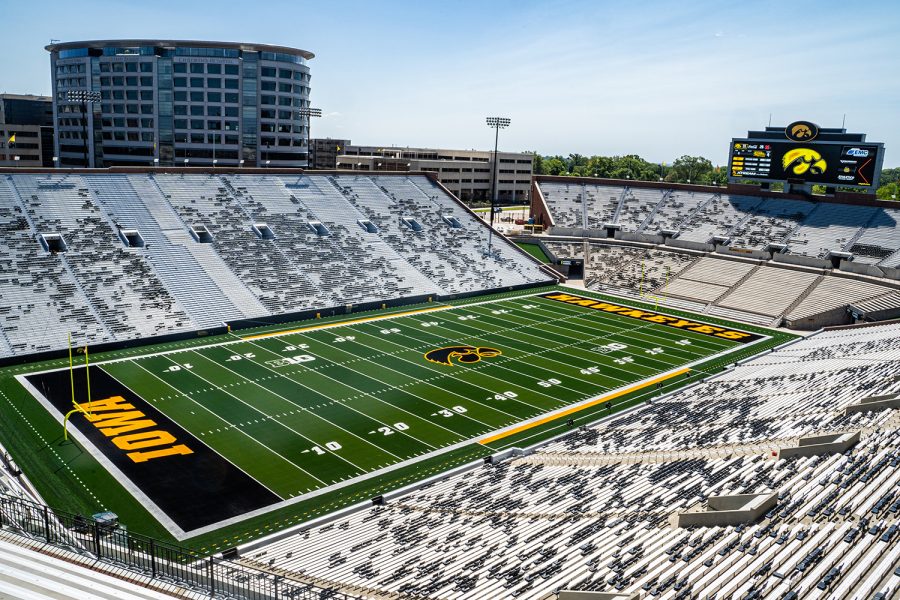NCAA issues next set of return-to-sport guidelines
The NCAA’s third set of guidelines are expected to be followed by Power Five teams returning to competition.
Kinnick Stadium is seen fom the north end zone at Iowa Football Media Day on Friday, August 9, 2019.
July 16, 2020
The NCAA announced Thursday its third set of safety recommendations for sports to return this fall. These recommendations provide updates about the protection of athletes and prevention of community spread of COVID-19.
The guidelines are expected to be followed by Power Five teams that are returning to competition. They are designed to inform schools in responding appropriately based on their specific circumstances and in the best interest of returning college athletes’ health and well-being.
Among the recommendations put forth are:
- Daily self-health checks.
- The appropriate use of face coverings and social distancing during training, competition and outside of athletics.
- Testing strategies for all athletics activities, including pre-season, regular season and post-season.
- Testing and results within 72 hours of competition in high contact risk sports.
- Member schools must adhere to public health standards set by their local communities.
“Any recommendation on a pathway toward a safe return to sport will depend on the national trajectory of COVID-19 spread,” Brian Hainline, NCAA chief medical officer, said in a release. “The idea of sport resocialization is predicated on a scenario of reduced or flattened infection rates.”
Any player who tests positive for the coronavirus will be forced to isolate for 10 days and will only be allowed to return to action after at least three days without symptoms, according to the guidelines. Players who are found to have been in “high-risk” contact with others who have tested positive will have to quarantine for 14 days.
The Center for Disease Control and Prevention defines high-risk contact as being within six feet of an infected person for more than 15 minutes in which one or more individuals are not wearing masks.
Practices are encouraged to take place outside as much as possible due to studies that indicate transmission is more likely inside buildings. Face coverings will be encouraged during practices.
According to the recommendations, games or seasons could be suspended due to:
- A lack of ability to isolate new positive cases or quarantine high contact risk cases on campus.
- Unavailability or inability to perform symptomatic, surveillance, and pre-competition testing when warranted and as per recommendations in this document.
- Campuswide or local community test rates that are considered unsafe by local public health officials.
- Inability to perform adequate contact tracing consistent with governmental requirements or recommendations.
- Local public health officials stating that there is an inability for the hospital infrastructure to accommodate a surge in hospitalizations related to COVID-19.
Fall sports are very much in question due to the COVID-19 pandemic. The Big Ten announced that if sports can be played in the fall, its teams will be moving to conference-only schedules.
The Pac-12 followed the Big Ten’s lead and committed to conference-only schedules for fall 2020 seasons the next day.
Live college sports have been on hold in the Big Ten since March 12, when the NCAA announced it was canceling all remaining winter and spring postseason championships and the conference did the same with its remaining regular season competitions.
“When we made the extremely difficult decision to cancel last spring’s championships it was because there was simply no way to conduct them safely,” NCAA President Mark Emmert said in a release. “This document lays out the advice of health care professionals as to how to resume college sports if we can achieve an environment where COVID-19 rates are manageable. Today, sadly, the data point in the wrong direction. If there is to be college sports in the fall, we need to get a much better handle on the pandemic.”



